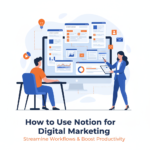
Finding Your Target Audience for Social Media Marketing
Introduction
Identifying and understanding your target audience is crucial for successful social media marketing. Without a well-defined audience, marketing efforts can become ineffective, leading to wasted time and resources. This guide explores the key strategies, tools, and techniques to find and engage the right audience for your brand on social media.
Why Defining Your Target Audience Matters
1. Improves Engagement and Interaction
-
Content tailored to a specific audience resonates better and increases engagement.
-
Relevant messaging leads to more meaningful interactions.
2. Optimizes Ad Spend and ROI
-
Targeting the right audience ensures that ad budgets are spent efficiently.
-
Higher conversion rates result from reaching people genuinely interested in your brand.
3. Enhances Brand Loyalty and Trust
-
When you address your audience’s needs and interests, they develop trust in your brand.
-
Loyal audiences are more likely to share and advocate for your brand.
Steps to Identify Your Target Audience
1. Analyze Your Existing Customers
-
Look at customer demographics (age, gender, location, income level, etc.).
-
Identify common interests, pain points, and behaviors.
-
Use customer surveys and feedback to gain deeper insights.
2. Conduct Competitor Analysis
-
Identify your competitors and analyze their audience.
-
Observe their engagement metrics, content style, and follower demographics.
-
Use tools like SEMrush, Ahrefs, or Social Blade to gather insights.
3. Use Social Media Analytics
-
Facebook Insights: Understand demographics, engagement levels, and interests.
-
Instagram Analytics: See who interacts with your posts and stories.
-
Twitter Analytics: Monitor audience demographics and tweet performance.
-
LinkedIn Analytics: Identify professionals engaging with your content.
-
TikTok Analytics: Understand the age, gender, and location of your viewers.
4. Create Buyer Personas
Develop detailed buyer personas to represent different segments of your target audience:
-
Demographic Information: Age, gender, income, education, profession.
-
Psychographic Information: Interests, hobbies, values, lifestyle.
-
Behavioral Traits: Purchasing behavior, social media usage, preferred content types.
-
Pain Points & Challenges: Problems your brand can solve.
5. Leverage Audience Research Tools
-
Google Analytics: Provides data on user demographics and interests.
-
Facebook Audience Insights: Offers insights into users’ online behaviors.
-
BuzzSumo: Helps discover trending content and audience preferences.
-
Hootsuite & Sprout Social: Analyze audience engagement and sentiment.
Segmenting Your Social Media Audience
1. Demographic Segmentation
-
Age groups (Gen Z, Millennials, Gen X, Boomers)
-
Gender-based preferences
-
Income and purchasing power
2. Geographic Segmentation
-
Target audiences based on their location and cultural preferences.
-
Localize content for different regions.
3. Interest-Based Segmentation
-
Identify niche interests that align with your brand.
-
Engage users with content that reflects their passions.
4. Behavioral Segmentation
-
Track social media interactions, purchase history, and content engagement.
-
Customize marketing messages based on user actions.
Engaging Your Target Audience
1. Create Platform-Specific Content
-
Facebook & Instagram: Visual content, live videos, stories.
-
Twitter: Short, engaging posts, real-time updates.
-
LinkedIn: Professional articles, case studies, thought leadership.
-
TikTok: Short-form videos, trends, challenges.
2. Use Influencer Marketing
-
Partner with influencers who align with your target audience.
-
Leverage their credibility to build trust and reach.
3. Run Targeted Social Media Ads
-
Use audience insights to create highly specific ad campaigns.
-
A/B test different audience segments for better results.
4. Engage Through Polls, Quizzes, and Interactive Content
-
Gather real-time feedback from followers.
-
Increase engagement by making users part of the content creation.
5. Monitor and Adapt Your Strategy
-
Track engagement rates, audience growth, and conversion rates.
-
Continuously refine content and ad strategies based on performance.
Conclusion
Finding and engaging the right audience is the foundation of a successful social media marketing strategy. By analyzing customer data, leveraging analytics tools, and segmenting audiences effectively, brands can create content that resonates, builds trust, and drives conversions.
Start refining your target audience strategy today to maximize your social media impact!
This comprehensive guide explores how to find and engage your target audience for social media marketing. Let me know if you need any modifications or additional insights!
Author



